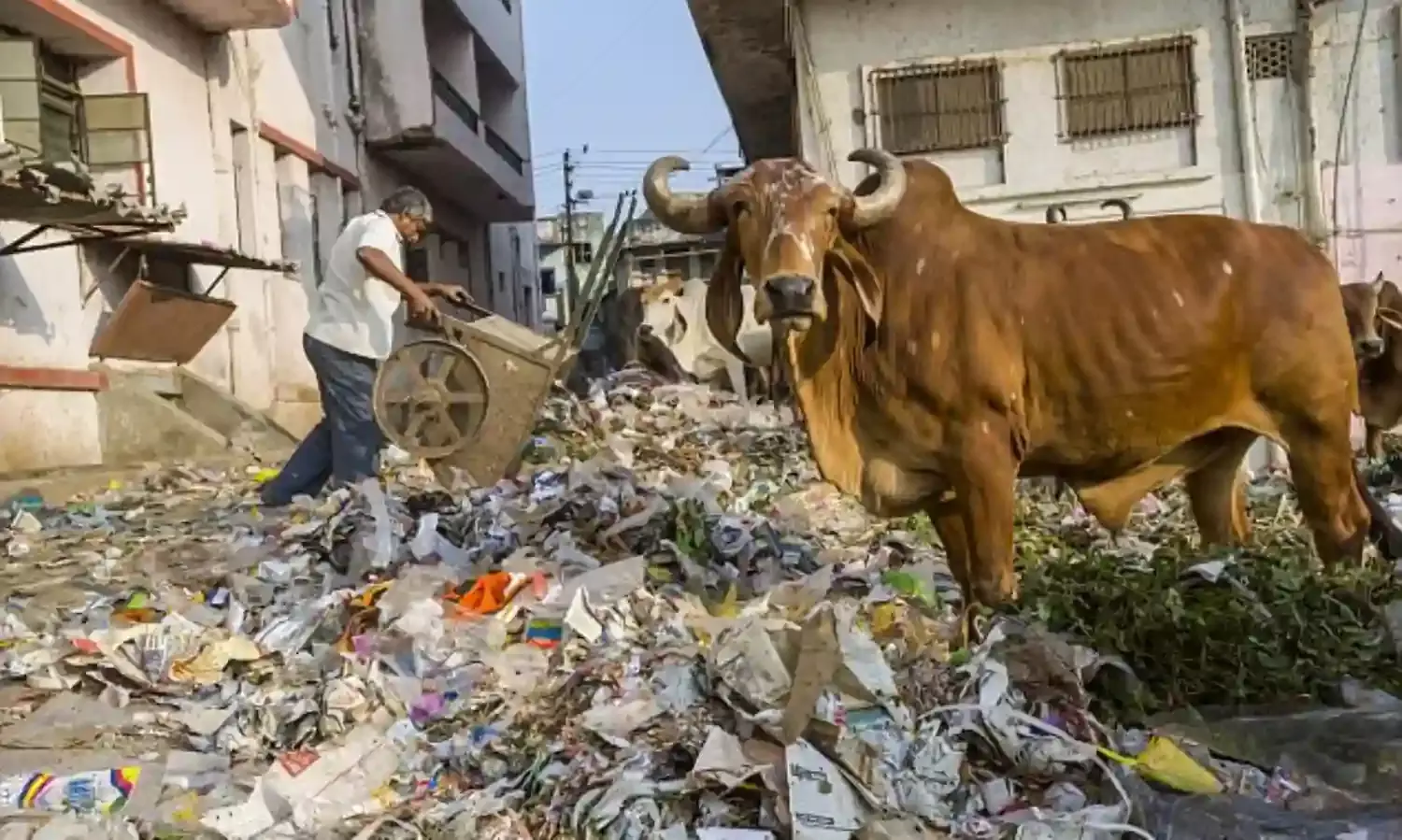Is the Cow Eating Into BJP Votes in Western UP?
Starving animals attack crops to survive

LUCKNOW: One of the closest kept secrets before the elections is of the cow eating the marginal farmer out of home and hearth. Mechanisation and the ban on cow slaughter has hit the poor farmer hard, with the sheer cost of keeping a sterile cow making him release the poor animals out on the roads. Hungry bulls and cows now roam the streets and fields of towns and villages in western UP, visibly starving, as they return to attack the wheat crop and eat whatever they find.
A leader of the Opposition from western UP, not wanting to be quoted, said that farmers here were already reeling under the impact of bad sugarcane prices, and now “the cow is eating their their wheat and other crops.” He said it had had a very adverse impact on the farmers, who have no idea how to deal with the new problem of starving, sterile cows.
With the BJP earlier, Jat leader and agriculturist Sompal Shastri told The Citizen that the cow had become “every farmer's problem” in western UP. He said the marginal farmer did not have the money to feed and nurture sterile cows, and was left with no option but to set them loose. Mechanisation and the ban on cow slaughter he said were the primary reasons for this state of affairs.
Shastri pointed out that cow shelters were not enough, and the government had folded its hands when confronted with the growing problem. He said that it cost a poor farmer - who constitute 87 percent of the agrarian class - Rs 4,500 to maintain a sterile cow, money that he just cannot afford. Burdened with debts and low remunerative prices, farmers now have to face the added weight of sterile cattle, which complete the vicious circle by attacking and finishing their crops.
A senior Jat leader from western UP said the cow was eating now into BJP votes in the state, with farmers distressed about leaving the animals to starve and face a painful death, and also about the crops being destroyed by the starving cattle.
Studies have been conducted by the Haryana Agricultural University on this issue, sources said, but have not been released. The number of sterile cows is thus not public but the figures are large enough, Sompal Shastri said, to cause havoc for all farmers in the northern states in particular. In 2012 a study had placed the number of stray cows at five million - this did not include the ageing animals not let loose on the streets. Some experts placed the numbers at over 35 million, that has all gone up substantially now.
Not so long ago a few photographs of cow shelters had found their way to the media, with cows that had collapsed and were clearly dead or dying. A cow shelter owner in Rajasthan had told The Citizen then that he had been promised money from the government at the time for the sterile animals' upkeep, but none of it had been made available. “I do not have the money to look after them and get them grain, so what am I expected to do?” he asked.
Shastri confirmed this, saying that initially some religious minded persons had given donations for the shelters but there was little money to feed the increasing numbers of cattle. “The farmers just do not have the money, and this is a major burden on them,” he said.
Anti-cow slaughter squads through organised, targeted lynchings had succeeded in spreading fear across the states popularly referred to as the ‘cow belt’ - Haryana, Rajasthan, Madhya Pradesh and Uttar Pradesh in particular - where the issue of hungry cattle has assumed crisis proportions. This is one of the reasons why the new government in Madhya Pradesh under Chief Minister Kamal Nath had promised to build cow shelters in the state, work on which has reportedly begun. But as the sources said, “This will not be enough, for the expense is monumental as are the growing numbers of sterile cattle.”
Terrifed dairy farmers are not even visiting cattle farms, with major outlets almost drying up as a result. The price of milch cows has fallen as well, from Rs 40-50,000 to less than Rs 18,000 per animal, with the income of dairy farmers hit hard.
Oppostion sources from Uttar Pradesh said the Jat farmers in the west were now “totally united against the BJP and the current dispensation”. For them it is a question of livelihood, and not communalism. Citing the instance of the byelection in Kairana in western UP, which the BJP lost, the sources said bonhomie had been restored between the communities.
“The election was held in the heat of summer and the month of Ramzaan - when Muslim women came to fill water from the well, the Jat women moved aside saying ‘you go first’, with news of this spreading like wildfire through the area,” the sources maintained, to drive home the point that the communal divide had eased, and that voters were united now on the issue of “jeb” (pocket).
“Electricity bills have increased by over two and a half times, tractors in NCR have to be sold in 10 years as is the move, ganna (sugarcane) prices are too low, the cow is eating the gehu (wheat), how can the poor farmer survive this,” the sources asked.
“It is a question of sheer livelihood, and the BJP despite its promises has not been able to provide that for the farmers.”



